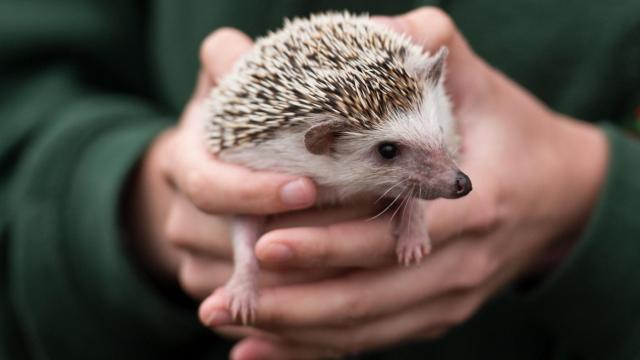The origins of a notorious bacterial superbug can be traced back to hedgehogs that lived centuries ago, new research this week suggests. The study found evidence that one particular type of methicillin-resistant Staphylococcus aureus, also known as MRSA, first emerged on the skin of hedgehogs. The bacteria likely evolved resistance in response to fungus also living on hedgehogs that naturally produced antibiotic compounds to kill off their competitors — long before humans began using antibiotic drugs to treat these infections.
MRSA is one of the most well-known examples of antibiotic resistance. The term refers to any strains of S. aureus that are resistant to beta-lactam antibiotics — a class of antibiotics that include methicillin but also many other drugs, including penicillin. S. aureus strains, including MRSA, live naturally on our skin and elsewhere, typically without causing trouble. But when these bacteria do cause illness, often among people hospitalized or in poorer health, MRSA infections can be much harder to get rid of with conventional treatments and can turn deadly.
Scientists discovered the existence of MRSA almost immediately after methicillin became the standard drug of choice for staph infections in the 1960s. But it wasn’t until the 1990s that MRSA became widely known, as rates of hospital-related cases climbed and strains spreading between people outside of hospitals began to emerge. There has been some progress in stemming the tide of MRSA within hospitals since then, though this progress may have slowed down in recent years. The Centres for Disease Control and Prevention estimates that almost 120,000 Americans contracted serious bloodstream infections of MRSA in 2017, while nearly 20,000 died as a result.
The widespread use of antibiotics in medicine and agriculture since the 1940s has fostered the emergence of drug-resistant infections, including MRSA. But a few years ago, scientists made a curious discovery: Hedgehogs living in Sweden and other European countries seemed to widely carry a form of MRSA known as mecC-MRSA. mecC-MRSA is thought to cause only a sliver of MRSA infections in humans, and while other animals have been documented to carry it, rates of colonisation were much higher in these hedgehogs (around two-thirds had it). This led scientists at the time to theorise that hedgehogs have been a natural host for mecC-MRSA for at least decades.
This new research, published in Nature on Wednesday, has found genetic evidence that this timeline goes back much further. An international group of researchers from the UK, Denmark, Sweden, and elsewhere, including some of the first to document mecC-MRSA in hedgehogs and other animals, collaborated for the study. They sequenced the genomes of hedgehog MRSA strains and compared them to other S. aureus strains in order to build a likely family tree.
Near as they can tell, the lineages that first gave rise to the hedgehog-related MRSA we see today began in the 19th century, about 200 years ago. The team also found that a common fungus living on hedgehog skin, known as Trichophyton erinacei, can produce two different types of beta-lactam antibiotics. And in the lab, hedgehog MRSA strains did appear better able to survive against these antibiotics than other strains.
All told, the findings paint a picture as old as time.
“Our study suggests that it wasn’t the use of penicillin that drove the initial emergence of MRSA, it was a natural biological process. We think MRSA evolved in a battle for survival on the skin of hedgehogs, and subsequently spread to livestock and humans through direct contact,” said senior study author Ewan Harrison, a researcher at the Wellcome Sanger Institute and the University of Cambridge and a senior author of the study, in a statement from Cambridge.
mecC-MRSA infections in humans are rare and are typically mild and easily treated with other antibiotics when they do happen. So even though these bacteria may have occasionally sickened us over the past 200 years, the findings shouldn’t make us fearful of hanging out with hedgehogs, the authors say.
But they do illustrate that the world is a smaller and more connected place than we might think. Because most antibiotics we use today are derived from natural sources, this may not be the only example of important antibiotic resistance that has existed prior to the antibiotic era of medicine. And we already know that antibiotic resistance found in other animals can have serious health consequences for humans. That said, while some animals may play host to their own native superbugs, our continued overuse of antibiotics in livestock also plays a major, if not leading, role in causing this resistance.
“These results underscore the importance of taking a broad One Health perspective on antibiotic resistance that recognises the role of natural selection in wild animals and the connectivity of natural, agricultural and human ecosystems in the evolution and spread of antibiotic-resistant pathogens,” the researchers wrote.
Editor’s Note: Release dates within this article are based in the U.S., but will be updated with local Australian dates as soon as we know more.
